Pass Your Amazon AWS DevOps Engineer Professional Exam Easy!
100% Real Amazon AWS DevOps Engineer Professional Exam Questions & Answers, Accurate & Verified By IT Experts
Instant Download, Free Fast Updates, 99.6% Pass Rate
Amazon AWS DevOps Engineer Professional Practice Test Questions in VCE Format
Amazon AWS DevOps Engineer Professional Practice Test Questions, Exam Dumps
Amazon AWS DevOps Engineer Professional AWS DevOps Engineer - Professional (DOP-C01) exam dumps vce, practice test questions, study guide & video training course to study and pass quickly and easily. Amazon AWS DevOps Engineer Professional AWS DevOps Engineer - Professional (DOP-C01) exam dumps & practice test questions and answers. You need avanset vce exam simulator in order to study the Amazon AWS DevOps Engineer Professional certification exam dumps & Amazon AWS DevOps Engineer Professional practice test questions in vce format.
SDLC Automation (Domain 1)
17. CodeDeploy - Introduction & Overview
So let's get a quick recap on what Code Deploy is, but if you feel confident, you can skip this lecture. So we want to deploy our applications automatically to many easy instances. So they go from V One all the way to V Two. There are currently several ways to handle deployments using Opera's installations, including Ansible, Terraform Chef, and Puppets. But there is also a way provided by AWS, which is a managed service called AWS Code Deploy. So, how does Could Deploy make it work? Well, each EC2 machine or even on-premises instance actually must be running the Code Deploy agents. So we'll have a bunch of EasyTwo instances that are running the agent. Then the agents will be continuously pulling for a list of work to do and apps to deploy. Code Deploy will then send an app spec YAML file to the instances, and the application will be pulled fromGitHub Rs Three and EC Two will run the deployment instructions, and finally the Code Deploy agents will report on the success or failure of the deployment on the instance after following the instructions in a spec emo. So here's what's important: we have the source code and the aspect ML file as a developer, and we're going to push those into GitHub, Amazon S3, or Code Commit, and then we're going to trigger a deployment. The deployment will be picked up by the EC2 instances because they're pulling for Could Deploy to do something, and then Could Deploy will instruct these instances to download the code from GitHub or Amazon S3 and the apps or YAML file onto them and do the deployment thanks to the specifications in the Appspect YAML. Remember this is just an overview; we'll do a great deep dive into Appspect YAML and so on. Now, "could deploy" means that you can group your easy two instances by deployment groups, and you can create a deployment group for each of your different environments, such as development, testing, and production. There's lots of deflect ability when you want to define any kind of deployment, so you can even have subgroups within those. Code Deploy can be changed, for example, with Code Pipeline, as we'll see later on, and use artefacts from there. And Code Deploy can reuse any existing set of tools, and it works with any kind of application and even has integration with auto-scaling, as we'll see in a later section. By the way, Blue Green will notice that this only works when you have EC2 instances, as you cannot create on-premises instances on demand. Finally, there is also support for a diverse lambda deployment as well as EC 2 and ECS, and Could Deploy does not provision resources for you. So you have to provision all the instances in advance, and then Could Deploy will take care of the deployment. So that's it for a very high-level overview, but let's get hands-on and learn a lot more about code deployment.
18. CodeDeploy - EC2 Setup
Okay, so we have our CodeCommit repository to store our code. Then we have Code Build, where we build our project and can test it or build it and create artefacts if we want to. And now we're going to want to deploy our code onto EC2 instances. So this is where we'll use AWS Code Deploy, and this is going to be a great deploy tool. The exam will ask you a lot of questions about it, and you need to understand it in various manners. You need to understand it for EC Two. You need to understand it for ASG ECS and lambda. So Code Deploy will be visited in this course multiple times. For now, we are just going to focus on AWS Code Deploy for EC2 on-premise instances for Lambda and for ECS. But first, before we do all of this, let's get started with EC Two. So we need to go ahead and create an EC2 instance on which we will deploy our code. For this, we will go to instances, and we will launch an instance. This instance will be an Amazon Linux 2 AMI. We'll choose this, as well as the TWO micro to stay within the free tier. We'll then go ahead and configure the instance details. We'll create one instance for now, and we will choose an I role. Now we do have to create an animal role, and I'll tell you why. Because Code Deploy will basically say to the ECQ instance to fetch the code and artefacts from S3, it needs to have access to a role that can get and list items from S Three.So whenever we go ahead and create a role, it's easy to add permissions. We'll add an S3 for read-only permission. So there you have it: three read-only access levels. This is good. Click on Tags, and then click on Review. The role name will be easy to recall for Code Deploy. Excellent. We'll go and create the role. Okay, the role has been created, so now we can go back to Launch Wizard and refresh the im roles, and here we get access to the EC2 role for Code Deploy. Here everything looks good, and we could set up some user data to set up the Code Deploy agents, but I want to do this step by step with you and show you what happens. So we will not put anything right here for now. Next, without storage, and we'll just have a root EBS volume. This is fine. Tags were fine, and we'll finally configure the security groups and have SSH on port 22. This is fine. We'll review and launch and have lunch. We could select an existing key pair, but I don't have one right now, so I can go ahead and create one, and I'll call it AWS DevOps. Once I'm offset, I will download it, and I could SSH into my instance using this. But I'll show you something a little bit different this time because I think it's good for you to see the new features of AWS. Our instance is starting, and let me wait for a few seconds before it is available. So our instance is started, and we would like to SSH into it to install the Code Deploy agents. But instead of using SSH from the terminal, which could be really cool, we're going to try something new. Or right-click and click on "Connect." Or you can click on the Connect button here. And we have the option to use a standalone SSH client, which is what we've always done by changing the key permission and then doing SSH with the key and then specifying the host name, etc. And this works. And we could also use something called easy-to-instance Connect, which is a browser-based SSH connection. And this is quite new as of, like, a few months ago. So if you want to look it up, type EC Two-Instance Connect blog, and this will show you the blog. So it came out on June 27, 2019. And so we can directly SSH into our EC2 instances from our web browser, which is really cool, and it's actually more secure because it uploads some temporary SSH keys. So let's just connect to it. And here we go. As you can see here, it just opened a new tab for SSH into my CT Two instance, and I'm done. Now, if you want to know how that works exactly, you can always look up the blog to understand the security implications of this. But why don't we go ahead and keep on doing the tutorial? So we did SSH into our EC2 instance for the very reason that we wanted to use Code Deploy. And so for this, we have to install the Code Deploy agent. Thankfully, I have the code, so it's called deployedNd and it's in the directory CSV demo. And so first we have to do a pseudo-YAMUPDATE to update all the packages on our instance. Then we will install Ruby and WebGET, okay? And then we are going to download the installer of the Code Deploy agent. Here we go. And then we have to install it for this; we make it executable, then we run the install auto, and then we check the status of the agent. So let's just paste these three commands. Paste them. Here we go. And now the agent has been installed. And if we do a pseudo-service code deployagent status, we see that the code deployagent is running as process ID 13772. So we have set up the code deployment agents on our EC2 instance, and we gave our EC2 instance a service role that gave it access to S 3. So now we're ready to go and code deploy and set up our deployment group. But before we do this, let's go to tags and give a few tags to our instance. The first is name, and it will be Web Server, and the second is environment, and this will be, for example, Development. The reason we give these tags is that code deployment will need these tags to exist on our easy two instances to be able to understand which instance to deploy to. All right, so that's it. We've done all the setup that was necessary for our EC-2 instance. I will see you in the next lecture for the code deployment-specific part.
19. CodeDeploy - Application, Deployment Groups & First Deployment
So let's go to code. Deploy. And in here, I'm going to create our first application. You must name it, so I'll call it the Could Deploy Demo. And we need to choose a compute platform. As I said, for now we'll deal easy to" and "on premises." But later on we'll deal with Alias, Lambda, and ECS. So let's choose EC2 on-premise and create our first application. It says that in order to create a new deployment, we first must create a deployment group. So let's create our first deployment group. A deployment group represents a set of two instances. So I'll call them my development instances, and they will represent all the instances in ECTwo that are from the development environment. I need to create a service role for Code Deploy that will allow it to target our two easy instances. So for this, let's go back to IEM, and we'll create a role and scroll down. This is a role for Code Deploy, and we'll choose it as the first one because we want to call other services such as Auto Scaling. If we dealt with ECS or Lambda, we would create a different set of roles. Next for permissions, there's only one role we should attach, which is the AWS Code Deploy Role. So we'll create it and then review it, and then I'll call it a code deployment role. Create the role. The role has been created. So if we go back to Code Deploy now, I should be able to refresh this page, and I'll rename my group Development Instances and choose the service role we just Development InstaNow we need to choose a deployment type for that deployment group. So for now we'll deal with "in place." In Place indicates that the instances will be taken offline for the upgrade and then returned online once completed. Blue Green deployments are unique and extremely useful if you have an Amazon EC2 Auto Scaling Group or Amazon EC2 Instances where the current application revision is deployed. So for now, we'll just do In Place, and we'll go back to these differences between In Place and Bluegreen to really understand how they work with Cloud Deploy because this is something that you should master. So let's scroll down. For now, we should select a combination of EC's two auto-scaling groups. EC uses both on-premises and cloud instances for this configuration. So I will just choose Amazon EC2 instances, and we will see EC2 auto-scaling groups in great detail in the very last section of this course when we deal with auto-scaling groups in general. So for now, let's just select Amazon as two instances, and we should match these instances based on tags. So we need to create tag groups, and so we need to choose a tag, for example, "environment," and the value would be "development." And so, as you can see here, one unique matched instance has been matched based on these tags. This is because we just tagged our EasyTo instance in the previous lecture and added the environment and the name tag to it. Okay, so we're going to target all of the easy2 instances with the environment excellence, and then we'll scroll down and select a deployment configuration. We'll see what that means in great detail as well, but for now, let's just choose and deploy default settings all at once. Finally, is there a load balancer for us? And right now, there is no load balancer. So our Web server should be accessible directly on port 80, and we haven't done that. We'll edit the security group later on. But for now, we'll disable load balancing to make things a little bit more simple and create the deployment group. This is just to get started. Don't worry, we'll go in great depth on code deployment. Okay, so the deployment group has been created, and it represents one easy two instances. So now what we should do is create a deployment for this group. So we'll create a deployment and need to target a deployment group. And then we need to choose a revision of our application. So this is where our application lives, in an Amazon S3 Three buckets.But currently we do not have a three-bucket system where we have our revisions. So what we should do is deploy our revision to the three buckets. So let's go back to our code. And this is the script. So the first thing we have to do is create a bucket, and we'll enable versioning for that bucket just to make sure we can have multiple versions of our application in our S Three buckets. So I'll just use the CLI for that. I use AWS's three MB to make buckets. And I refer to the bucket here called AWS Three bucketsDefine here the region as an EU one, and the profile to do this is something that I set up in my CLI called AWS DevOps. So please adapt this command based on your environment and so on. So I will go ahead and run this command right here, and this does not work. So I guess it's a great time to show you how to reconfigure my AWS CLI. So let's go back to IAM and go to users. I'll go to Stefan and I'll select security credentials, and I'll make these ones inactive because I don't need them anymore. Apparently they don't work, and I'll actually delete them and create new access keys. So here's my access key ID, and obviously my secret access key will deactivate them after the course is done. So I'll go into here and click AWS configure minus profile" for AWS DevOps. So here I should enter an accesskey ID, then a secret access key. So let's go ahead and enter this part of the key. Then I should select "default region name." So the EU West one will be great. And then it defaults. I'd format Jason, so here we go. So now if I run through my addresses again in three McKit comments, this one should work. And yes, it worked. Excellent. Then we'll enable versioning for a bucket. So we'll do it using the CLI, but you could do it using the console if you wanted to. And now versioning has been enabled. So let's go back into our S-three bucket. So let's go to S Three and see if that bucket has been created. So, yes, that bucket has been created. AWS DevOps nd now versioniand it seems like if you go to properties, that versioning is enabled. All right, step one is done. Now let's keep on going. We need to deploy this entire folder right here into S Three, and this folder contains this file called Apps YML. And we'll spend a lot of time on AppSpec YML in the future. But for now, this is something that's needed by the code deployed to deploy our application. So what we'll need to do is zip this entire file and place it in S 3. But thankfully, there is a little command called AWS Deploy Push, which does that for us. So we just need to change the application name to make sure that things work. So let's change the application name to what's relevant for me. So here is my application name. I could deploy the demo like this. So I'll change this right here. code deployment demo. And I will run this command, and you have to run it from within the directory that contains this YAML file. So excellent. Let me just copy the command and run it. And so what this will do is that it will zip up all the files in here, make sure that we do have an app specYAML file, and then it will upload it to S Three. So if we go to S Three now and refresh the page for S Three, we can see there is a code-deployed demo directory that's been created and an app zip file that has been created as well. So, excellent. This app contains all we need to do. And so let's go back to CodeDeploy, and I will refresh this page. Let's again choose my development instances as my deployment group. And here I can click and find that there is a revision that has been detected by Code Deploy for ll we need toSo I click here, and it has the entire revision location. It noticed the zip file. And for now, we're not overwriting anything. We'll just go ahead and create the deployments. So the deployment has been created, and this is the status. And we should just see what happens in the lifecycle events. So right now the download bundle is in progress, and we can view all the events here. So I'll just wait a few seconds until everything happens and everything works. So it says I succeeded. I can click on "view events" to see all the events that happened, and we'll take a deep dive at those in a second. But applications stop, download, bundle, and install; after install, applications start, and finally they validate the service. So all of these have worked, and so if I go to my EC2 instance and open up the port 80, I'll go to my security group, and it will open up the port IDY just to make sure that I can access my instance via the HTTP protocol. So I'll choose http, and I'll say from anywhere. ate the seNow, if I navigate to my HTTP instance using the public DNS right here, I should see yes, congratulations, version 5, this application was deployed on, and this is my instance ID. I'll show you how I got it later on. And then here's the AZ the instance was deployed into. So perfect. We have a lot of information and could deploy my application onto our ECTWO instance, which is quite cool. Obviously, there are a lot of things we haven't covered yet, but this is our first deployment, and this is quite nice to have, and I will see you in the next lecture.
20. CodeDeploy - Deployment Groups Discussion
Okay, so something I want to discuss is the deployment groups. So we could launch a lot of instances like this. For example, I could launch more like this. And I will say that I will edit the instance details and, for example, launch new instances. And you don't have to do this if you don't want to spend money. But I'll launch four instances and use the same role in each. And this time I also added some easy-to-use user data, such as having the installation of the agents be automated. So let's just do this. And I'll have it here, then Bash and I will add all of this code right here, then click Review and Launch, and Launch. Okay, here we go. I've launched my instances and I can view them. And so all these instances are also web servers, so 1234.And for tags, I can edit them one by one. So for example, I'll edit this one and say the environment is production. And I'll do this for maybe a few other Web servers. For instance, this one and finally the last. So we have three Web servers in the production environment, and we have two of them in the development environment. And so what I can do now is go back to code deploy, go back to my application, and in here and within this application, I can create a new deployment group. For example, this one I'll call my Production Deployment Group instance. I think I called them my production instances. And this will represent, again using the same service role, all the easy two instances that have the environment named production. And here, this is three instances. And I'll create a deployment group. I'll remove load balancing and create the deployment group. Here we go. So now we have different deployment groups. Here, we have two of them. And so we can see that maybe, in the beginning, I want to deploy to my development instances. Then, once I'm confident it's working properly, I'd like to deploy it in my production instances. So the process is exactly the same. You would just choose a revision and deploy it to a deployment group. But now we have the option of choosing which deployment group to go for in the first place. So deployment groups could be, for example, a smaller development with one or maybe two instances to get started. So you're free to really have any kind of combination you want for choosing the deployment groups. And this is something you have to realize. An application represents all the other deployment groups in your environment. So you can have your development, tests, production, testing environment, and so on. And for this, you just use tags to separate these deployment groups. So that's it for this lecture, but it's something DevOps should be aware of. And I will see you at the next lecture.
21. CodeDeploy - Deployment Configurations
So now let's talk about the deployment configurations. So when I went to edit my deployment group, for example, my production instances, we had here and there deployments. And so here it says that it will update all the instances in the ZIP code deployment group with the latest application revisions. And so each instance will be taken offline. But there's a strategy through which we take the instance offline. So the strategy is on the bottom. It's called deployment settings. And so, here we have three options. We can either say one at a time, so it will take one instance down, then update it, then put it back up, and if it's working, go on to the next one, and so on. So one at a time, half at a time, we will take half the instances down, upgrade them, and then put them back up. or all at once. If you do all at once, which is the one we've selected so far, that means that our application will be unavailable for a little while. and that's quite dangerous. But this is good in a development environment, for example. But if we're in production, maybe you want to take it easy and slow, one at a time, or maybe with another type of deployment configuration so you can create your own deployment configuration. And here we're able to say how many minimum healthy hosts we want at any point in time during the deployment. So, for example, if you want 80 feet, then you would set a percentage. and here you would put 80. So that means that at any point in time, 80% of your fleet will be healthy. Or you could set up a number and say at any point in time, "I want at least six easy-to-create instances to be up and running." So we'll use the percentage, maybe 80%, and we'll create the deployment configuration. So now we're able to choose that deployment configuration right here, when 80% of the fleet is healthy. And so we have a lot of control over how in-place deployments work for code deployment. So let me just save this configuration, and then we'll discuss the other types of deployments. So edit this again, and we scroll down. And here we have blue green.So Blue Green replaces the instances in the deployment group with new instances and deploys the latest application revision to them. So we need to, every time we do a blue-green, create new EC-2 instances. So this is a perfect fit for Amazon EC's two auto-scaling groups. But as I said, auto-scaling groups is such a big topic that I will deal with this at the end of this course. So we'll just forget about it right now. We could also manually provision the instances, but this is really painful. Here we have to select where the application is currently running and where we want it to be deployed to on new instances, and we have to manually provision these instances. And as a DevOps team, this is not a really good option. We want things to be automated. So here we realised that when we deal withBlue Green deployments in code deploy, we need tohave an easy to auto scaling group. And as I said, the hands-on portion will come into the auto-scaling group section at the very end of this course. So this is not good for DevOps, and this is really good, but not for now. And if we do select Blue Green deployment, something I want to draw your attention to is that we need to have a load balancer enabled as well, whether it be an application load balancer or a classic load balancer. but we'll see this in due time. So for now, we've seen that it's in place, that there is a deployment setting that we need to create, and whether or not we enable load balancing. So I'll save these changes, and we've seen in great detail how deployment groups work. So now let's try to deploy something for this. So I'll create a deployment and select my deployment group and production instances, and we'll obviously choose in place. And we'll select the application revision. And I've uploaded a bunch of those because I was trying a few things. So let me find the right one, which is 185. So let me look in this list for one eight and five. One eight-five is going to be right here. Okay, so this is the one I want to deploy, and we'll just create a deployment right now. And so, here, it's going to deploy to the instances, all of them, as you can see, and all three of them will be deployed to.And so right now I can start. This is a bit tricky because you need a minimum of three healthy instances. But currently, none of them is healthy. So the deployment has failed. But imagine a healthy deployment where this would obviously work. This is just something that's a bit annoying. And the way to just hedge that would be to take our current deployment group, click on it, and edit it, and we'll change the in-place deployment to be something like one at a time. Here we go, save changes. And now I'm able to create a deployment. So I'll create a deployment for it, and I'll choose my production instances and this revision and click on Create Deployments. and hopefully now this one will work. So it has been created, and we'll wait a few seconds to see what happens. So yes, it's installing the application on your instances, and we have zero out of three instances updated. And what it should do is, because we chose one at a time, update one instance at a time. So yes, one instance has been updated out of three. and, I guess, in a few seconds. The second one will be updated. Here we go. And then in another few seconds, the third one will be updated. And so we've seen here that this is a rollingdeployment with one at a time instances being updated. So proof of success This is awesome. And obviously, we can check this by going into this web server using the public DNS. And hopefully, if we go in there, yes. We still get . And obviously, we caV five. All right, so that covers all the options for deployments. I will see you at the next lecture.
Go to testing centre with ease on our mind when you use Amazon AWS DevOps Engineer Professional vce exam dumps, practice test questions and answers. Amazon AWS DevOps Engineer Professional AWS DevOps Engineer - Professional (DOP-C01) certification practice test questions and answers, study guide, exam dumps and video training course in vce format to help you study with ease. Prepare with confidence and study using Amazon AWS DevOps Engineer Professional exam dumps & practice test questions and answers vce from ExamCollection.
Amazon AWS DevOps Engineer Professional Video Course

Top Amazon Certification Exams
- AWS Certified Solutions Architect - Associate SAA-C03
- AWS Certified AI Practitioner AIF-C01
- AWS Certified Cloud Practitioner CLF-C02
- AWS Certified Solutions Architect - Professional SAP-C02
- AWS Certified Security - Specialty SCS-C02
- AWS Certified Data Engineer - Associate DEA-C01
- AWS Certified Machine Learning Engineer - Associate MLA-C01
- AWS Certified Developer - Associate DVA-C02
- AWS Certified Machine Learning - Specialty
- AWS Certified Advanced Networking - Specialty ANS-C01
- AWS Certified DevOps Engineer - Professional DOP-C02
- AWS Certified SysOps Administrator - Associate
- AWS-SysOps
Site Search:








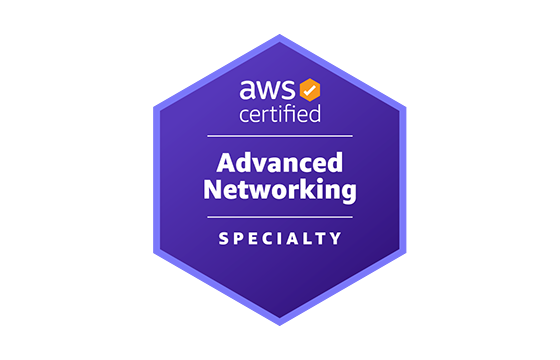



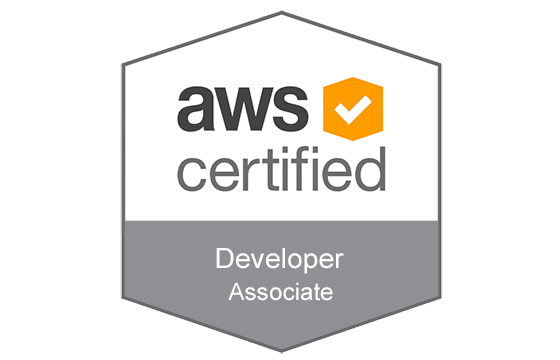
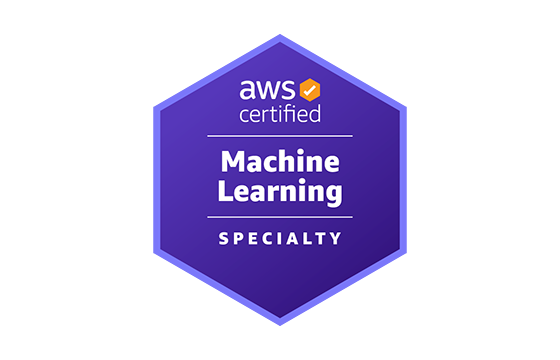

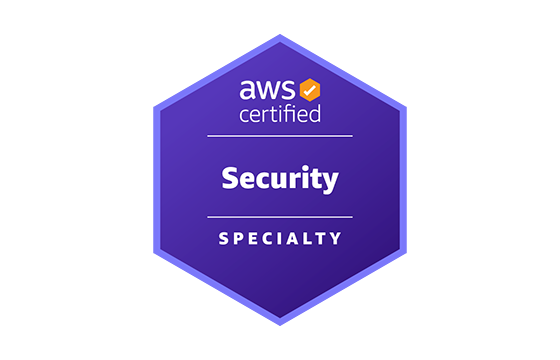
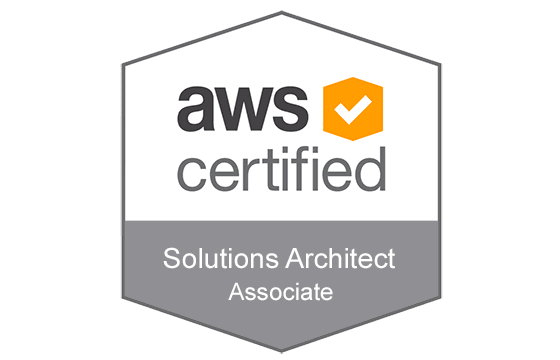
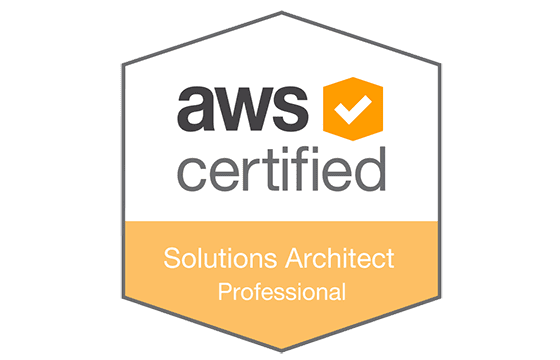
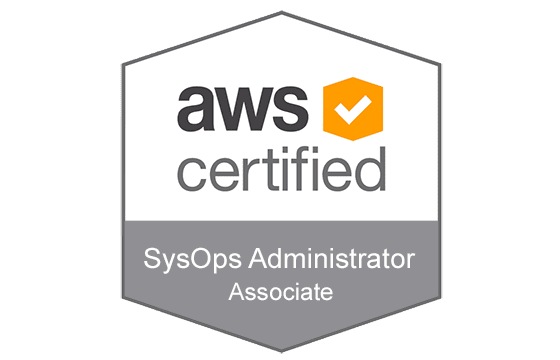
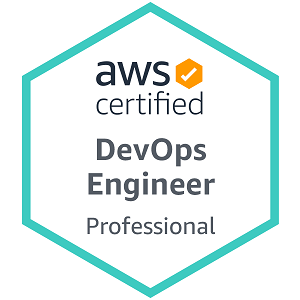



Yeah I would agree these questions are good preparatory material
@riley_roll, practicing with the questions and answers for AWS DevOps Engineer Professional exam is a great way to prepare… they will come in handy during your exam. I also used them and I achieved a notable pass… it was very exciting!!
any final tips before I take my exam in a few days? still think if i should use AWS DevOps Engineer Professional braindumps, will they be helpful?
thanks to the practice questions and answers for AWS DevOps Engineer Professional exam, I scored highly in it! my success is attributed to them. more thanks to examcollection
@philip_theo, yes, these exam dumps for Amazon AWS DevOps Engineer Professional exam didn’t disappoint me when I used them. I didn’t find any new questions in my real test… they will help you with no doubt! Still, don’t rely on them only, they serve as a supplementary study material! ;))
hi! are these AWS DevOps Engineer Professional dumps up to date?
i just thought i should mention that the AWS DevOps Engineer Professional vce files are still valid just to help out those who may be wondering. they helped me pass with ease
@Aarón,
Thanks for contacting us.
Please, sign in to your Account, find page with exam, then choose “Premium File” from the right menu on the exam’s page ("Training Products") and click on "Download Now":
https://www.examcollection.com/AWS-DevOps-Engineer-Professional.html
Hi guys, I hope all is well
I have a premium account and I want to download the premium exam file AWS DevOps Engineer Professional but this come into a bundle, can you share with me only the premium file?
Regards
--
Aarón Castellanos
Add Comment
Feel Free to Post Your Comments About EamCollection VCE Files which Include Amazon AWS DevOps Engineer Professional Exam Dumps, Practice Test Questions & Answers.